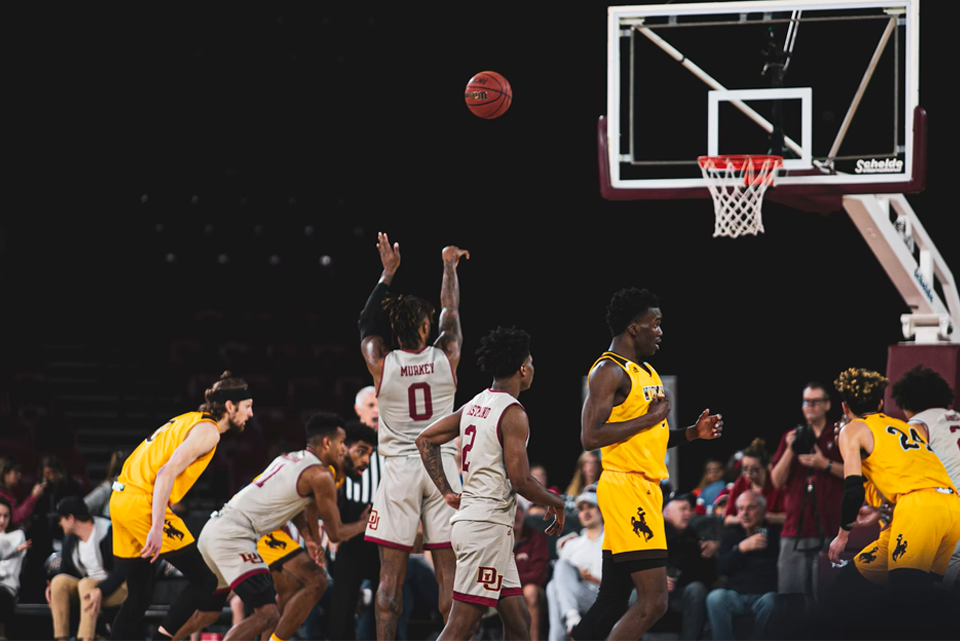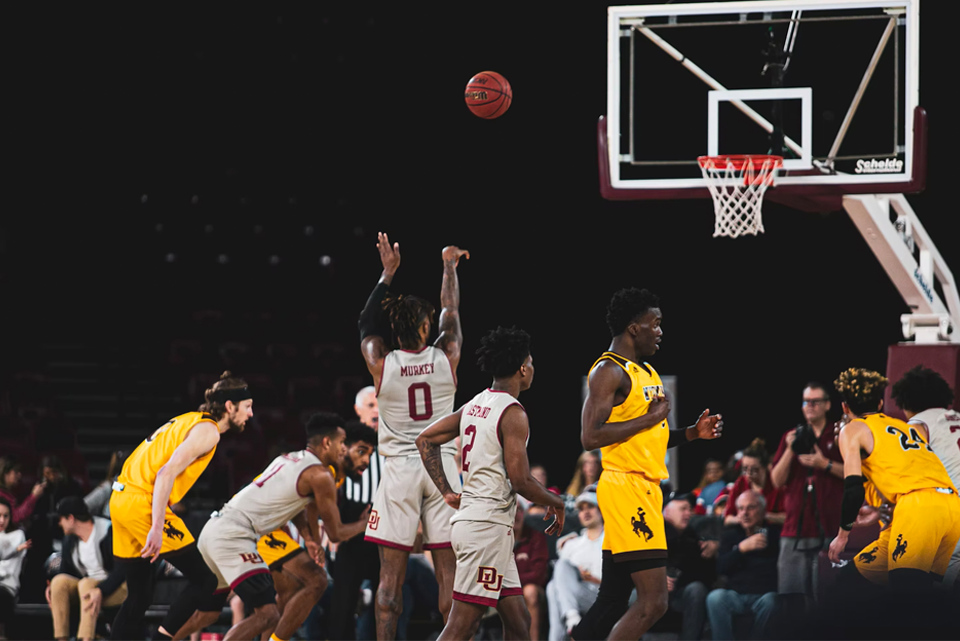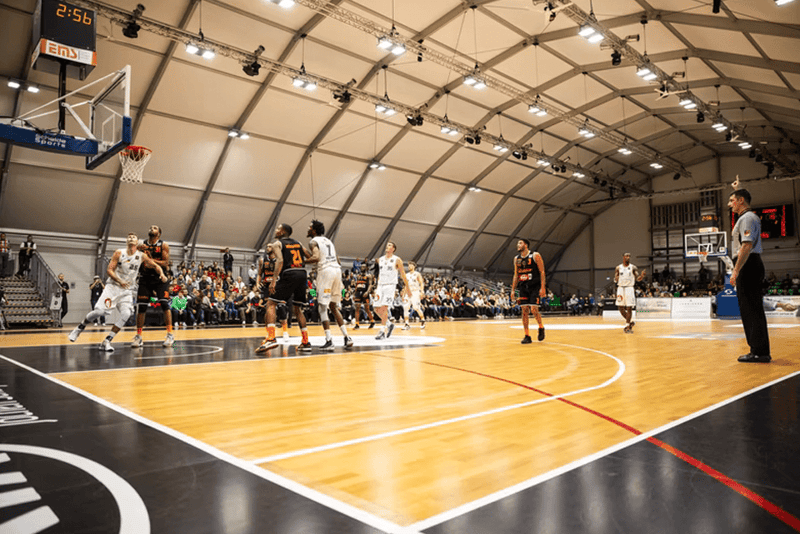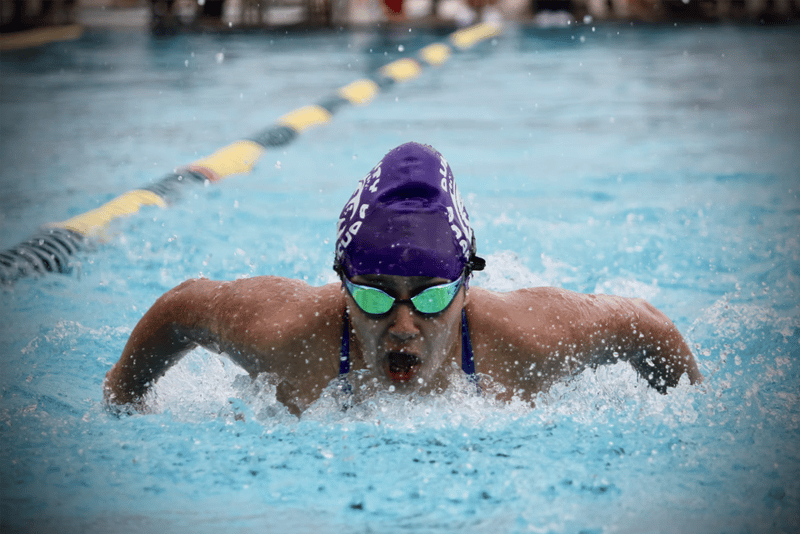
In-Season Training Strategies for Collegiate Basketball
9th August 2018
Introduction
The in-season training period is arguably the most important time of year for basketball players. Yet is often described as a “maintenance period” with much less of an emphasis placed on training than during the off-season. With a regular season that lasts in the upwards of 16 weeks, a 5-6 week pre-season, and the potential for a 3-4 week post-season run, half of the calendar year could be spent in the in-season training phase …Therefore, by the second half of the off-season, your mind should start to shift towards how you want to train your players once they start practice and games in the fall. Basketball offers athletic performance coaches a unique opportunity to work with a small group of athletes that allows for individualized training and the opportunity to provide each athlete with exactly what they need. This article will break down the methods that can allow you to attack in-season training and compete at the highest level at the end of the year.
Four Training Blocks of the In-Season Phase of Training
I like to look at the in-season training phase in four separate training blocks. Separating the in-season phase into four stages helps to organize your training and set objectives for each block. It is important to note that while these guidelines should be set at the start of the season, multiple factors can influence changes to these percentages. It is your job as the athletic performance professional to adapt the following guidelines as needed throughout the year.
Block 1:
Non-Conference games: If you start the year training light and cutting corners you are not setting yourself up for success in March. We do want to keep volume relatively low to avoid as much soreness as possible, but we want to keep the intensity high. We run the following cycle for our compound movements for three weeks and then repeat it once for a total of six weeks:
Week 1: 40/8, 50/5, 60/5, 70/5, 80/5
Week 2: 45/8, 55/5, 65/3, 75/3, 85/3
Week 3: 50/8, 60/5, 70/3, 80/2, 90/1
Block 2:
1st half of the non-conference schedule: At this point we are certainly still training hard but want to take the volume of practice/games into account to individualize programming. We do not complete anything over 3 reps for our compound lifts. Below is our 6-week progression for this phase of the year:
Week 1: 50/6, 60/3, 70/3, 2×77/3
Week 2: 50/6, 60/3, 70/3, 2×80/2
Week 3: 52/6, 62/3, 72/2, 2×82/2
Week 4: 55/6, 65/3, 75/2, 2×85/2
Week 5: 55/6, 65/3, 75/2, 87/2
Week 6: 50/6, 60/3, 70/2, 80/1, 90/1
Block 3:
2nd half of the non-conference schedule: During this block we look at bar speed as our primary focus. Minutes and practice volume have added up now and fresh legs are critical. We use chains and bands for accommodated resistance as well to increase the load at the top without overloading during the eccentric portion of the lifts. We will use velocity as our guide using our V2 open barbells. Below are our general guidelines for percentages:
Week 1&4: 40/6, 6×50/2
Week 2&5: 45/6, 6×55/2
Week 3&6: 50/6, 6×60/2
Block 4:
Post-season play: This block will start a week before our conference tournament and hopefully continue into the NCAA’s. We utilize partial movements to maintain strength levels and use the contrast method to stay explosive and keep the “pop” in our legs. Workouts during this block are very short (15-20 minutes) and are focused on helping us gain a psychological edge. At this point, our basketball team is extremely bought into the weight room and looks forward to these training sessions late in the year.
Day 1:
A1) Rack Squat (above parallel) progressive sets leading up to 90-100% of 1rm for 1 rep
A2) Keiser Squat: 5-6×2
A3) Seated Box Jump: 5-6=6×2
Day 2:
A1) 3-Board Bench: Progressive sets leading up to 90-100% of 1rm for 1 rep
A2) Tall Kneeling Keiser Pull Downs: 5-6×4
A3) Rotational med ball slams: 5x-6×3
Adjusting your Program Based on Minutes Played, Training Load, and Age
One of the best parts of working with a basketball program is how much you can individualize your training. There are three factors we take into consideration:
1) Minutes Played: If all of your athletes are doing the same program in-season regardless of playing time, you are not setting them up for success. The athlete who played 38 minutes in the last game should be doing something different then the athlete who played 8. You would be doing both a disservice by not making an adjustment based on these differences. A simple way to go about this is by adjusting your percentages. Generally speaking, I will have three different breakdowns for percentages based on minutes played. Athletes who played over 20 minutes, athletes who played 10-20 minutes, and athletes who played under 10 minutes. For example, if we are working up to a set of three in-season, the under 10-minute group would work up to 90% for three. The 10-20 minutes group would work up to 80% for 3. While the 20+ minute group would work up to multiple sets of 70% for three with an emphasis on bar speed.
In addition to adjusting training intensity, it is also good to adjust training frequency. Using the same groups I would adjust in the following ways: the under 10 minutes group would train 4x per week, the 10-20 minute group 3x per week, and the 20+ minute group will get 2 solid lifts in. At the end of the day, the athletic performance professional’s job in-season is to keep the team strong as a unit. How many times has a freshmen started out the year not playing and all of a sudden in the second half of the year gets an opportunity? When that athlete was training as if it were the off-season and gets thrown into the fire they are in much greater position for success.
2) Training Load: Use RPE as a tool to make daily adjustments to your training plan. Another benefit to working with a sport with a small roster like basketball is that you really get to know the players individually. If you develop a high level of trust and respect with your athletes, they are going to be very honest with you about how their bodies are feeling. While it is critical to have an annual plan laid out for your in-season training, most times you will end up needing to make several adjustments each week. If your players are reporting high session RPE and you adjust their training, you are helping to reduce the chance of injury by avoiding additional stress to their bodies as well as providing a psychological lift for the athletes in knowing they will go a bit lighter. On the flip side, if athletes are reporting low RPE scores you can push things a bit more to take advantage of it. Trust and culture are keys to success using RPE as a tool. If you have a great culture of athletes who work hard that you trust are giving honest feedback, using RPE can be a game changer for your program.
3) Age: Just like minutes played should impact your training plan, the age of an athlete should as well. A 22 year-old who has played in 100+ college basketball games is going to need something different than an 18 year old freshman. There are two things I like to adjust based on age. The first is exercise selection. A good example of this is the squat. I love the back squat and still believe it is a key tool for the development for most athletes. However, as an athlete gets a bit older and we get in-season, I’ve found that using other methods to reduce some stress on the body leads to fresher legs and more buy-in from these athletes. We use the Pit-Shark with our high minute group and our older players. This continues to challenge the athletes but removes the axial load and allows their bodies more freedom to make adjustments.
The second adjustment I like to do based on age is to give the athletes increasingly more autonomy. If you have a group who you can trust, getting their feedback will only add to the buy in for in-season training. I sit down with each of our older players as we get into the in-season period and ask them questions related to the exercises that make them feel their best on the court. I break that into specific categories (squat, push, pull, hinge, lunge) and talk them through each. If an athlete has a preference to do a step-up over a lunge because lunges don’t feel great on their knees in-season, or they express a preference for a trap bar dead-lift over a back squat, using those exercises will only to make your program better.
Recovery Schedule
Proper recovery from games and practice is critical in-season. In our program, we constantly talk about what it means to be a “pro” and that requires that our team does not skip meals, follows through with treatment if necessary, and does pro-active recovery sessions before and after games. One way we go about this is by using our RPE data. If athletes are reporting a high level of soreness and fatigue, we will make sure that they do some form of treatment before or after practice with our sports medicine staff. Players’ personal preference plays a major role in this as well. After in-season lifts I will have a “pick two” option for our team to choose from. This will include soft-tissue work, distraction stretches, aerobic circuits, and partner stretches to name a few. The athletes can be increasingly allowed some opportunities to make decisions for themselves as they take ownership of what their body needs. Road trips are also really tough on the body for a college athlete. Airplanes and buses certainly weren’t designed for athletes who range from 6’0-7’0 feet tall. The tight spaces leave their bodies feeling locked up upon arrival. To prepare for this, all our trips are taken the day before a competition and I scope out the hotel fitness facility in advance to see what additional equipment we will need to take with us. After dinner, I send a text to our core group to come to the hotel fitness center and they will either stretch, ride bikes, use a soft-tissue stick, or get in the boots that we take with us on the road. As the season gets rolling, each athlete starts to develop their own individual routine.
Game-Day Workouts
With world class athletes like LeBron James reporting that they lift on game days, it is no surprise that we are seeing college athletes looking to do the same thing. Game-day workouts are tricky, and it is important as an athletic performance coach, to figure out what the right dose is for an athlete that gets them prepared for the game correctly without breaking them down. There are several reasons why a pre-game lift routine can help an athlete but to me the psychological lift that it can offer is the most valuable piece. There is typically a lot of time spent waiting around before games. Generally speaking we have a 2pm shoot-around for a 7pm game and will eat dinner around 3pm. That leaves somewhere around 2.5 hours for the athletes to either go back to their apartment or hotel room before they must report back for warm-ups. Some athletes can relax their minds, take a nap, and come back ready to go for stretch. Others have a bit of nervous energy and a short 15-20 minute workout can help to channel some of that and get them focused. The right music, a little blood flow, and proper visualization offers an anabolic boost before tipoff. I have a group of three athletes who thrive with in-season lifts and we started experimenting with this in pre-season to see what they liked. Each of their lifts are a little different, but below is a sample of what three of our starters did on game days this year. Each lift is designed with two different options to account for hotel fitness center limitations.
Warm-up: 5 min Bike
Activation: x6 each direction: Lateral Band Walks, Monster Walks, Glute Bridges
Workout
A1) Keiser or med ball jab step: 3×5 each way
A2) Drop step to box-jump or drop step to vertical jump: 3×3 each way
B1) Keiser or Band Explosive X-Pull: 3×6
B2) Plyo Push-Ups: 3×5
Micro-dosing
If you speak to coaches of any sport around the country, the general recommendation for in-season training is two days per week. This gives you enough time to get in your compound lifts, 2-3 auxiliary exercises, and correctives. Most of these lifts last between 20-45 minutes. While I still like this structure for some sports, for collegiate or professional basketball I believe shorter workouts with higher frequency offer more benefits. Like the psychological lift that comes from a pre-game lift, a short session that gets the athlete moving before practice offers the same effect. How many times have you lined your team up for the pre-practice warm-up and watch their eyes glaze over as you call out “side lunge” for the 200th time of the season? A pre-practice modified session not only offers variety but also the ability to get more done over a training week than a traditional 2x per week training program. Below is a sample week we have used in-season. It is important to remember that variety is key. Athletes who need specific attention come in on their own after practice or during the day.
Day 1: 3 days out from next game *Furthest away from the next game so this is our heavy day
Warm-up: Kneeling hip to hamstring, bird-dogs, Prone IYT, Groiners: 3x8each
A1) Squat: 50/8, 60/5, 70/3, 3×80/2
B1) Bench: Same as squat
B2) Chest Supported DB Row: 4×6
Total time: 20 min
Day 2: 2 days out from next game
Warm-up: Ladders 5min
A1) Front Rack KB Reverse Lunge: 4×4
A2) Sorinex Leg Curl: 3×6
B1) Pallof Press: 3×8
B2) DB Shrugs: 3×10
Total time: 15 min
Day 3: 1 day out from game
Warm-up: Lower Body Band Series 5min
TRX Circuit Total Body: 3×5 reps with no rest 5min
Total time 10 min
Day 4: Game Day
Day 5: Day after game
10min Soft-Tissue Warm-up
RDL+High Pull: 5×3
Push Press: 5×3
Chin-Ups: 4×6
Suit Case Carries: 3x30yds
Total time: 20 min
Day 6: 1 day out from game
Hurdle Mobility Series
A1) Plyo Push-ups 5×3
A2) Band SA Speed Pull Downs 5×3
A3) Keiser Squats: 5×3
Total time: 10min
Day 7: Game day
Take Advantage of your Warm-Ups
Warm-ups are the most consistent part of your interaction with the team. Generally speaking, you have 8-15 minutes every single day to get the team ready for practice. Why not use that time productively and avoid falling into the trap of dynamic warm-up boredom? On the days that we don’t lift pre-practice, we have a different warm-up for each day. Here are some examples:
1) Med Ball Series: a combination of throws, upper, lower, and core work pieced together as a circuit.
2) Yoga Series: a “Flow style” 8-minute warm-up with movements done in yoga that address specific areas that our athletes have issues with
3) Fun Warm-Ups: This might be ladders, tennis ball reaction drills etc. Generally, this can be anything that serves as a “wake-up” before practice.
4) “Circle Stretch”: While this might look like your typical high school pre- practice stretch, it is a great tool for certain days of the week. We use this the day after games or before practices that we know the guys won’t go up and down the court and is more of a walk through. We use basic static partner stretches, band stretches, and will often mix in foam rolling or even a PNF stretch during certain times of the year.
5) Activation Warm-Up: This will be a combination of several drills that includes mini-band drills and lower body activation techniques to get the team moving and to also address more global issues.
Exercise Selection
Individualizing your team’s training can be challenging but, when organized correctly, it offers tremendous benefits for in-season training. We choose the exercises for each athlete based on competency (how well they perform the lift), injury history, athlete preference, and training age. Below are the different options for each of our primary compound lifts:
Squat: Back Squat, Front Squat, Trap Bar Dead-Lift, Pit Shark, Seated Squat Pro
Horizontal Press: Bench press, Neutral Bar Press, DB Bench, Weighted Push-up
Vertical Press: Seated DB or Barbell Press, Incline Press, Push-Press, Landmine Press
Horizontal Pull: Pendlay Row, Chest supported DB Row, Cable Row, Hammer Strength Row
Vertical Pull: Pull-ups, Chin-ups, Pull Downs
“Triple Extension:” Clean, Snatch, Trap Bar Jumps, High Pull, Power Shrugs
Tying it all together
Investing in your in-season training approach can be a major competitive advantage for your basketball program. Below is a quick recap on how to set your team up for success this coming season.
- Break up the in-season year into four training blocks
- Adjust your program based on minutes played, training load, and age of each athlete
- Have a strategic recovery schedule
- Consider experimenting with game day workouts
- Take advantage of your warm-ups
- Choose from a variety of movement patterns and don’t get married to exercises
About the author:
George Greene is a highly accredited and recognized Athletic Performance Coach. He graduated from Springfield College with a B.S in Applied Exercise Science and went on to earn a Master’s Degree in Health and Human Performance from Fort Hays State University. He is a certified and registered strength and conditioning coach through the NSCA, a certified specialist in sports nutrition through the ISSA, and a certified sports performance coach through USAW. George’s greatest passion is pushing athletes to reach their genetic potential and has had the opportunity to work with both male and female athletes at the highest level. He is currently the Assistant AD for Athletics Performance at Stony Brook University on Long Island, NY and his experience includes work at The University of Mary Washington, The U.S Special Operations Command, The University of Massachusetts, and The University of Iowa. In his career, he has worked with several All-Americans, numerous All-Conference selections, and multiple athletes who have gone on to sign professional contracts in their respective sports. George can be reached on Instagram and Twitter @GreeneStrength
Related articles
Newsletter
Sign up here for the Movella newsletter and stay up to date about everything Movella has to offer.




